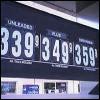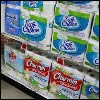The first unit of this course is designed to introduce you to the principles of microeconomics and familiarize you with supply and demand diagrams, the most basic tool economists employ to analyze shifts in the economy. After completing this unit, you will be able to understand shifts in supply and demand and their implications for price and quantity sold. You will also learn how to analyze how consumers respond to a shift in the price of the goods they consume. This understanding of the basic forces of supply and demand will serve as a foundation for the economic analysis you will undertake in the remainder of this course.

|
Introduction to Microeconomics Image courtesy of ninanord on Flickr. |
|
|
Image courtesy of Aaron Tyo-Dikerson on Flickr. |
|
|
Image courtesy of Nic Stage on Flickr. |












